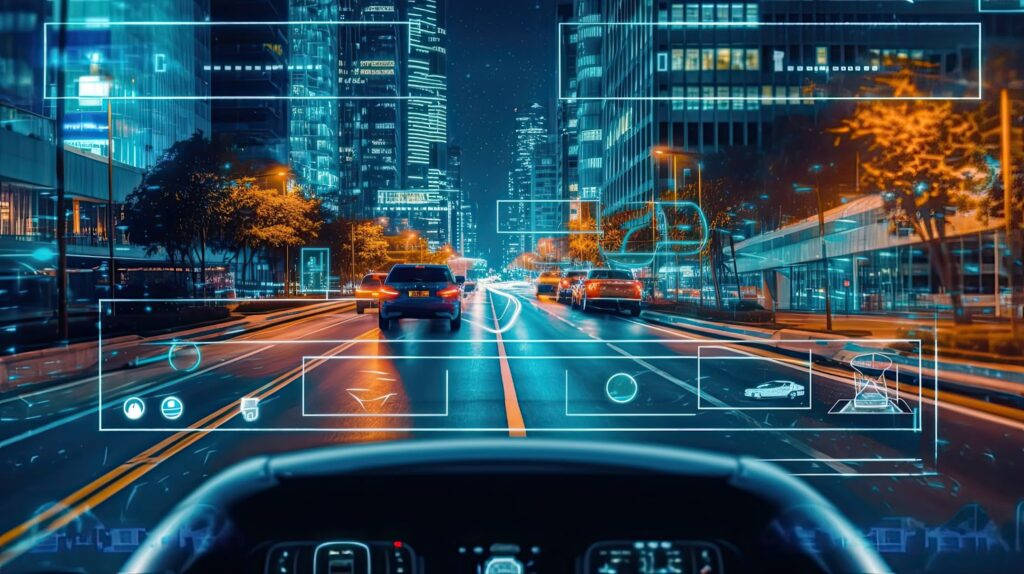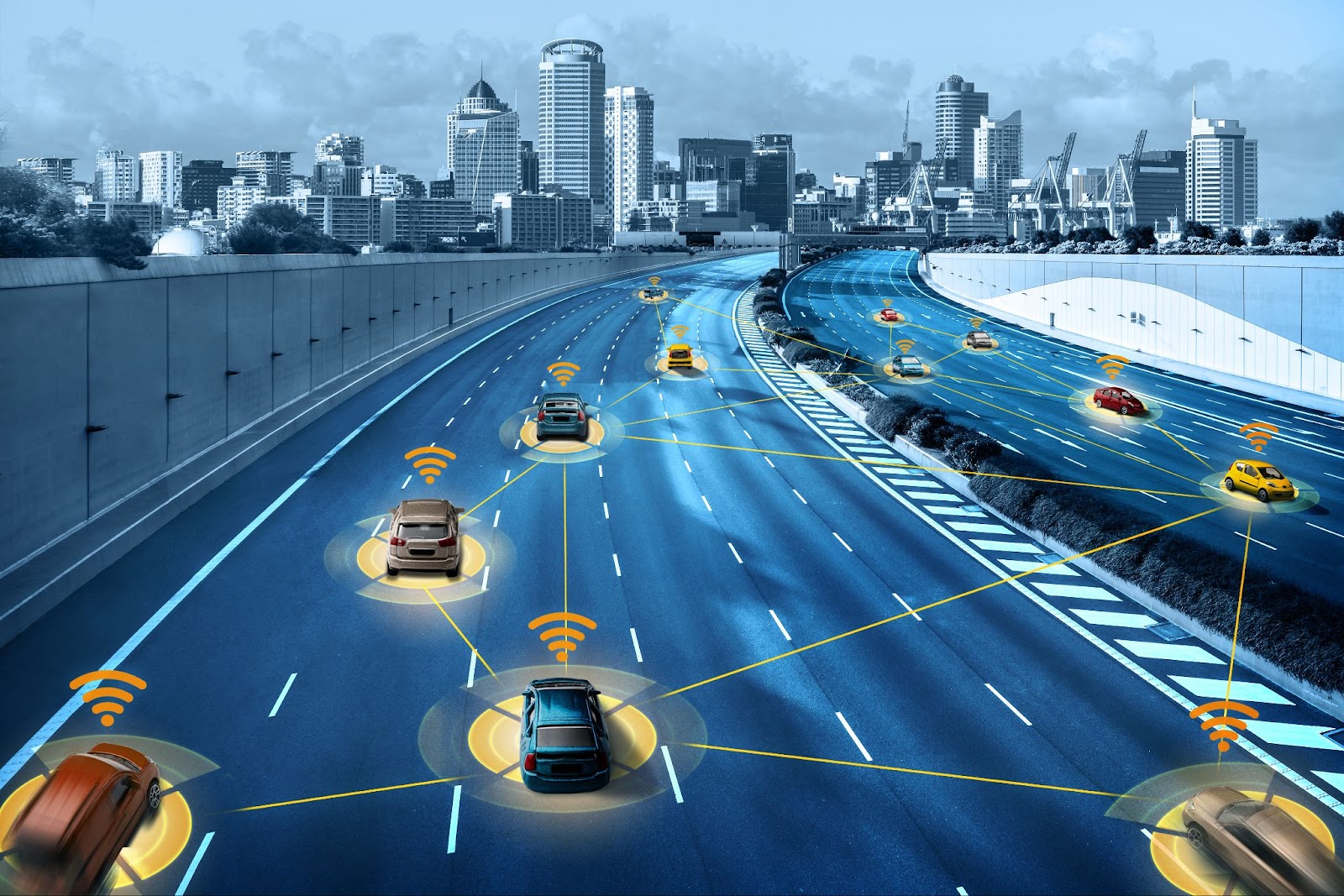Millions of cars share the roads every day, and ADAS technology is helping keep everyone safer. This smart system helps drivers avoid accidents and stay alert, making our roads much safer for everyone.
ADAS, which stands for Advanced Driver Assistance Systems, refers to a range of features designed to assist drivers. From lane-keeping help to automatic braking, these tools are like having a trusty companion beside you on the drive.
In this article, we will look at what ADAS technology is, its key components, the benefits it brings, and how dedicated ADAS technicians help keep this technology running smoothly. Join us as we discover how ADAS is a leap toward safer roads for all.
What is ADAS?
As we mentioned in the introduction to this blog, ADAS stands for Advanced Driver-Assistance Systems. It’s a kind of car technology that keeps people safe while they’re driving.
Think of it as a helper for the driver. ADAS uses many different tools, like cameras, sensors, and computers, to monitor what’s happening around the car and help the driver.
It warns you if you’re getting out of your lane or if there’s a car in your blind spot that you can’t see. It can even help your car stop faster if it looks like you might bump into something.
Cars with ADAS are made to lower the chances of accidents and to keep everyone on the road safer.
Key components of ADAS
When discussing ADAS cars, we’re referring to a suite of intelligent features designed to enhance the safety and ease of our driving experiences. These components function collectively, each bringing a unique skill to safeguard our journeys.
Adaptive cruise control
This feature acts as a smart co-pilot, automatically adjusting your car’s speed to maintain a safe distance from the vehicle ahead. This helps ensure you stay at a safe following distance without manual input.
Blind-spot monitoring
Imagine having extra eyes on the sides of your vehicle. This system alerts you if another vehicle enters your blind spot, enhancing your awareness and safety when changing lanes or maneuvering in traffic.
Lane departure warning
This system functions like a gentle nudge to keep you within your lane. It alerts you if it detects that you’re drifting out of your lane without signaling, helping to prevent unintentional lane changes.
Collision warning
Consider this as an additional set of eyes on the road. It provides warnings if it detects a potential collision with an object or another vehicle in your path, giving you time to react and avoid accidents.
Automatic emergency braking
In critical situations where a collision seems imminent, this feature can automatically apply the brakes to reduce the severity of an impact or, in some cases, prevent it altogether.
Parking assistance
This tool acts like an expert parking assistant, guiding you into parking spots smoothly and efficiently, which is especially helpful in tight or crowded parking situations.
These ADAS features significantly enhance road safety, working in unison to protect drivers, passengers, and pedestrians alike. They not only make driving more accessible and less stressful but also contribute to a safer driving environment for everyone on the road.

Challenges and limitations of ADAS
ADAS technology works to keep us safe on the road, but it also comes with challenges and limitations.
Bad weather
One big challenge is that ADAS relies on sensors and cameras, which mud, snow, or rain can block. So, ADAS features might not work perfectly in bad weather. Also, some of these sensors are very expensive to repair when they get damaged.
Newer technology
Another issue is that ADAS technology is pretty new, so not all car repair shops have an ADAS technician who knows how to fix these systems. Some drivers also find ADAS alerts and warnings annoying or distracting, which might make them less likely to use this tech.
Varying road situations
There’s the fact that ADAS can’t yet handle every road situation. Sometimes, the systems get confused by things like complicated or unclear road signs. So, even with help from ADAS, drivers still need to pay attention and make safe driving choices.
Lastly, while ADAS cars are becoming more common, many vehicles on the road don’t have these safety features yet. This means there’s a mix of cars with different abilities to avoid accidents, keeping the need for a careful human driver very important.
Cost and accessibility challenges
Another main obstacle preventing the wider use of ADAS is their high cost. The sophisticated technology that ADAS requires, including sensors and advanced computing capabilities, significantly raises the price of vehicles.
Additionally, maintaining and potentially repairing these systems increases the overall cost of owning a vehicle, making it less affordable for many consumers.
Here are some potential ways to overcome these challenges:
Economies of scale
As more car manufacturers include ADAS in their vehicles, the components needed, like sensors and chips, should become cheaper. This price reduction often happens when items are made in large quantities, which lowers the production costs per unit. Over time, as these technologies become more common, they should naturally become less expensive to produce.
Innovations in technology
Ongoing research can lead to new methods and technologies that are cheaper to produce and install. Advances that make it easier and cheaper to integrate ADAS into vehicles help reduce costs, making these systems more accessible to a wider range of consumers.
Government support
Governments can help by providing subsidies or tax breaks for companies that make and sell ADAS-equipped vehicles and for consumers who buy them. These financial incentives help offset the higher initial costs and encourage more people to choose vehicles with these safety features.
Educating consumers
Informing people about the long-term savings associated with ADAS, like lower insurance costs due to fewer accidents, may encourage more consumers to invest in these technologies. Promotional campaigns can emphasize how ADAS not only saves lives but also money by reducing the likelihood of costly accidents.
Flexible financing options
Car manufacturers and dealerships could offer special financing deals for ADAS-equipped vehicles to make them more affordable. These could include lower interest rates or longer payment periods, which would help spread out the cost and make these advanced safety features more accessible to buyers.
By tackling the issues of cost and accessibility, the car industry and government authorities can help ensure that the lifesaving benefits of ADAS are available to more people. This could make advanced safety technology a standard feature in all new vehicles.

The technological evolution of ADAS
The development of ADAS represents a significant leap forward in automotive technology aimed at enhancing vehicle safety and driving efficiency.
Rapid advancements and innovations have marked this evolution. They extend the vehicle’s capabilities to perceive, analyze, and respond to their environments more effectively than ever before.
Early innovations
The journey of ADAS began with basic features such as rear-view cameras and parking sensors, which provided drivers with better visibility and awareness of their surroundings. These initial systems focused primarily on aiding parking and low-speed maneuvers, offering a glimpse into the potential of vehicle automation.
Integration of sensors and cameras
As technology progressed, the integration of sensors and cameras became more sophisticated, leading to the development of features like adaptive cruise control (ACC) and lane-keeping assist.
These systems utilize radar, LIDAR (Light Detection and Ranging), and cameras to monitor road conditions, vehicle speed, and lane markings, respectively. This integration allows for real-time responsiveness to traffic conditions, enhancing both safety and driver comfort.
The rise of machine learning
The real transformative shift in ADAS came with the incorporation of artificial intelligence and machine learning.
These technologies allow ADAS to learn from vast amounts of data collected during drives, improving their decision-making processes and enabling more complex functions such as predictive braking and autonomous emergency maneuvers.
This level of sophistication means that ADAS can anticipate potential hazards faster and with greater accuracy than human drivers.
Connectivity and V2X communication
The latest in ADAS evolution involves vehicle-to-everything (V2X) communications, which enable vehicles to communicate with each other and with road infrastructure. This technology promises to dramatically improve traffic flow and safety by allowing cars to share information about road conditions, traffic congestion, and accidents in real-time.
Autonomous driving
The development of fully autonomous vehicles is the culmination of ADAS technology. Each ADAS feature contributes to the foundational technologies required for self-driving cars, from navigation and obstacle detection to complex decision-making under varying traffic conditions.
The evolution of ADAS not only charts a course toward safer driving but also encapsulates a broader shift in how vehicles interact with human operators and the driving environment.
With each advancement, ADAS moves closer to creating a seamless, integrated driving experience that promises to redefine automotive safety and efficiency in the years to come.
ADAS with Utah Mobile Auto Glass
Ready to enhance your vehicle’s safety and functionality with the latest in ADAS? Don’t wait to make this critical upgrade. Contact Utah Mobile Auto Glass today, and take the first step toward a safer driving experience.
Our team of skilled ADAS technicians is equipped with the latest tools and technologies to install, calibrate, and maintain your ADAS features, ensuring they function optimally and keep you and your passengers safe on the road.
Whether you’re interested in upgrading your existing vehicle with ADAS or need maintenance on your current ADAS car, Utah Mobile Auto Glass provides expert services that you can trust. We understand the complexities of modern automotive technologies and are committed to delivering the highest standard of service.
Visit our website or call us to schedule an appointment. Elevate your driving experience with Utah Mobile Auto Glass, where your safety is our priority. Let us help you drive into the future with confidence.
toto slot toto slot toto togel toto slot situs toto situs togel







